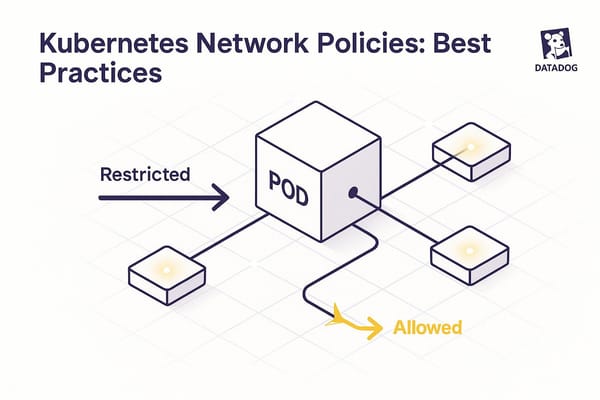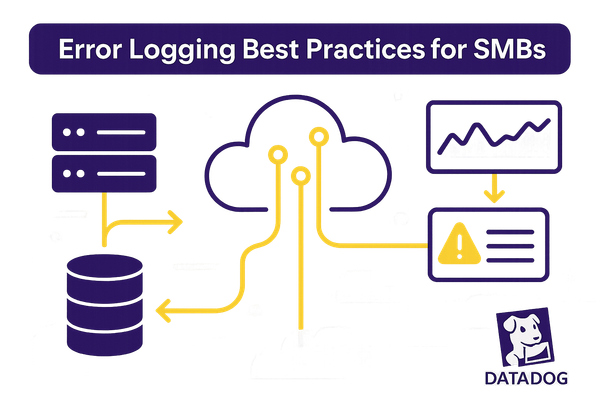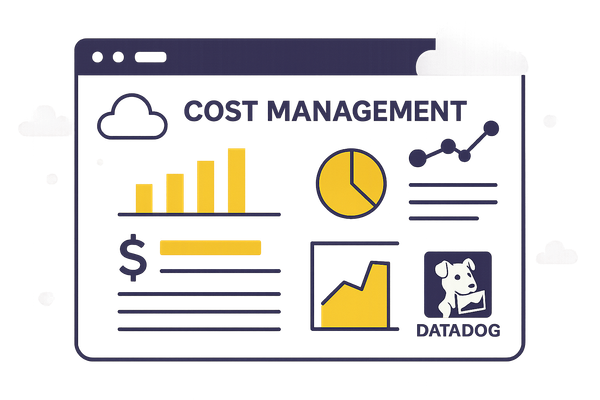How to Organize Resources with Datadog Tags
Organize your cloud infrastructure efficiently using Datadog tags for better monitoring, cost tracking, and incident response.
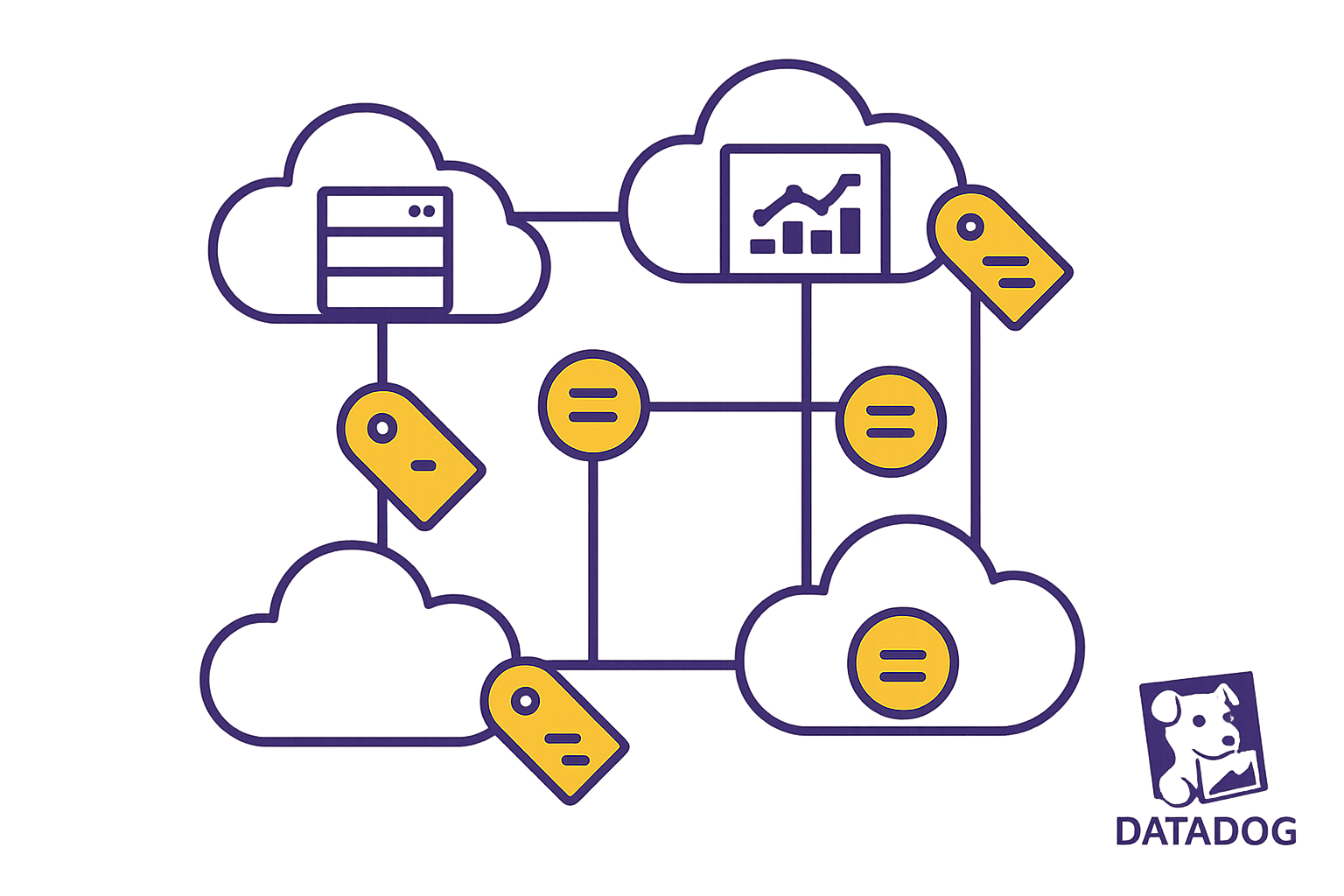
Datadog tags are a simple yet powerful way to organize and manage your cloud infrastructure. By using key-value pairs like env:production or team:backend, you can easily categorize resources, monitor costs, and streamline incident response. Here's what you need to know:
- Why Tags Matter: Tags help you filter, group, and search resources, making monitoring easier as your infrastructure grows.
- Core Tag Categories: Start with essential tags such as environment (
env:production), service (service:api), team ownership (team:frontend), and cost centers (cost-center:marketing). - Unified Service Tagging: Use reserved tags like
env,service, andversionto link metrics, traces, and logs across systems. - Tagging Tools: Datadog automates tag imports from platforms like AWS and Kubernetes while also allowing manual and bulk tagging through its UI and API.
- Best Practices: Stick to consistent naming conventions, avoid over-tagging to control costs, and document your tagging policies to maintain clarity.
Effective tagging not only keeps your resources organized but also helps with cost tracking and faster troubleshooting. Start simple, scale gradually, and use Datadog's tools to enforce consistency across your environment.
Datadog Tagging 101 | RapDev Datadog Webinar
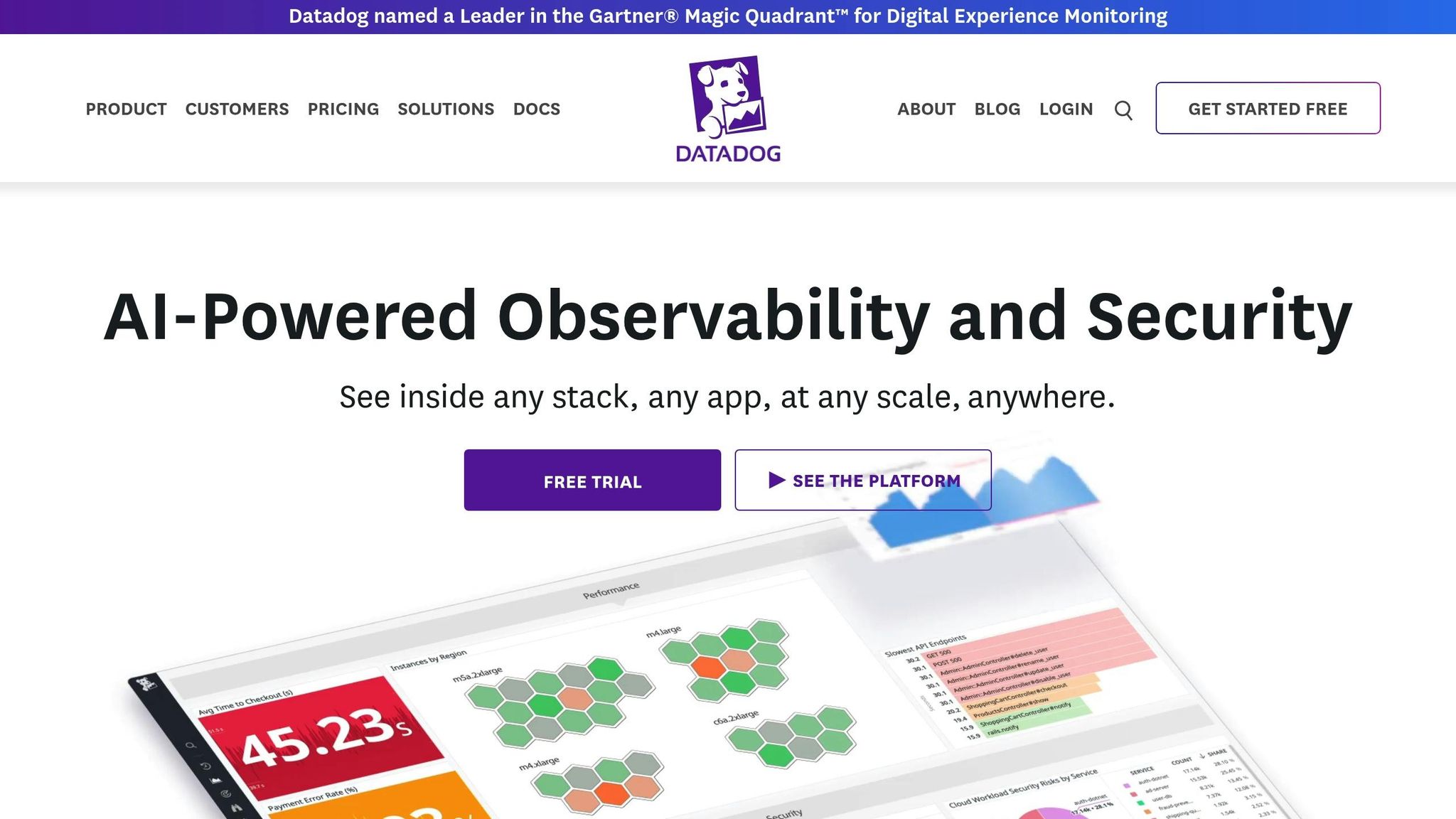
Planning Your Tagging Strategy
Creating a clear and scalable tagging strategy is key to managing your infrastructure efficiently.
Identifying Key Tag Categories
The success of your tagging strategy depends on selecting categories that align with your operational needs. Focus on tags that support monitoring, troubleshooting, and cost management, instead of tagging every attribute. Here are some essential tag categories to consider:
-
Environment tags: Use tags like
env:production,env:staging, andenv:developmentto easily filter and identify resources during alerts or investigations. This ensures you can quickly distinguish between environments without compromising production. -
Application and service tags: Assign tags that reflect business functions, such as
service:payment-processororapplication:customer-portal. These tags are particularly useful when diagnosing issues that span multiple components. -
Team and ownership tags: Clarify ownership with tags like
team:backend,team:frontend, orowner:devops. This makes it easier to route alerts to the right people and establish accountability. -
Cost center tags: Track budgets and resource allocation with tags like
cost-center:marketing,project:mobile-app, ordepartment:engineering. These provide visibility into where infrastructure spending occurs. -
Version tags: Use tags like
version:1.2.3to link deployments to performance, making it easier to correlate updates with system behavior.
Start with these core categories and add more only when there’s a clear need. Adding too many tags can lead to higher costs due to extra custom metrics, so balance detail with practicality.
Once you’ve identified the right categories, the next step is to standardize your tag formats.
Setting Up Naming Conventions
Consistent naming conventions are critical to avoiding confusion and maintaining order. Use descriptive, full words instead of abbreviations - environment:production is much clearer than env:prod, which could confuse team members over time.
Stick to a consistent format, such as lowercase with underscores, to avoid variations like CostCenter, cost-center, or costcenter. Eliminate redundant information in tag values. For instance, if the key is environment, the value should simply be production, not environment-production.
To ensure consistency, create a list of approved values for each tag category. For example, decide upfront whether to use production, staging, and development for environment tags. If your organization requires more detailed organization, consider using multiple tags instead of combining them. For example, use team:backend and subteam:payments rather than team:backend-payments for better filtering flexibility.
By adopting these practices, as recommended by best practices, you can ensure that your tagging system remains intuitive and easy to use without constant referencing of documentation.
Documenting Tagging Policies
A well-documented tagging policy ensures consistency and simplifies onboarding for new team members. Here’s how to create effective documentation:
- Central Reference Document: Maintain a single, accessible document that outlines all approved tag categories, naming conventions, and example values. Ensure it’s easily accessible to everyone, from developers to operations teams.
- Business Rationale: Explain the purpose of each tag. For instance, clarify how cost center tags help track spending or how environment tags improve incident response. Understanding the "why" behind tags encourages adherence to the guidelines.
-
Specific Examples: Provide clear examples for each tag type, such as
service:user-authentication,environment:staging, orcost-center:product-development. Avoid using vague placeholders. - Ownership and Governance: Assign responsibility for maintaining the tagging policy. Designate someone to approve new tag categories, update the document, and audit compliance to ensure standards don’t drift over time.
- Regular Updates: Schedule periodic reviews of the tagging policy to ensure it continues to meet your needs. Establish a process for updating the policy as your infrastructure evolves.
- Integration into Workflows: Embed tagging requirements into your deployment processes. For example, include tag compliance checks in infrastructure-as-code templates and deployment checklists to prevent untagged resources from entering your environment.
Assigning and Managing Tags in Datadog
To keep your infrastructure organized, it's essential to implement a consistent tagging strategy. Once you've established your tag categories and naming conventions, you can use Datadog's tools to enforce them. Whether through automated integrations or manual adjustments, Datadog provides several ways to manage tags effectively across your environment.
Tagging Resources via Integrations
The easiest way to tag your resources is by using Datadog's cloud provider integrations. When you connect platforms like AWS, Azure, or Google Cloud Platform to Datadog, their existing resource tags are automatically imported. For example, AWS tags such as region, instance-type, and availability-zone seamlessly map to Datadog resources. Tags like environment:production will look the same across both platforms. This automation is especially helpful in dynamic setups with auto-scaling groups, containerized workloads, or serverless functions.
To ensure this works smoothly, check your Datadog cloud integration settings and confirm that tag collection is enabled. For resources not covered by these integrations, you can rely on manual tagging or bulk management methods for added flexibility.
Manual and Bulk Tag Management
While integrations handle most tagging needs, some situations call for manual tagging. For example, custom applications, third-party services, or resources outside standard cloud integrations may require individual attention.
Using the Datadog UI, you can add key-value pairs like team:devops or project:mobile-app directly to any resource. These changes take effect immediately and are reflected in dashboards, monitors, and filters.
For larger-scale operations, the Datadog API provides a powerful way to manage tags in bulk. The /tags/hosts endpoint allows you to apply tags, such as project:alpha, to multiple hosts with a single API call. This is particularly useful during tasks like infrastructure migrations, onboarding new teams, or enforcing organization-wide tagging standards.
Additionally, tools like Ansible, Terraform, or Puppet can automate tag assignment during resource provisioning. This ensures that all new resources are properly tagged right from the start.
Auditing and Updating Tags
Once tags are assigned, it's crucial to audit them regularly to maintain organization and control costs. Use Datadog's tag explorer and infrastructure list views to identify issues like inconsistent naming (e.g., env:prod versus environment:production), orphaned tags from retired projects, or missing tags on critical resources.
The Service Catalog feature can also help with ownership tracking. Teams can assign metadata like owner:devops_team or contact:alerts@company.com to services, which streamlines dynamic alert routing during incidents. Before making any tag updates, review how changes might affect dashboards, monitors, and alerts. A quarterly review process can help you refine your tagging policies, remove unused tags, and add new categories as your infrastructure evolves.
Finally, avoid overloading custom metrics with excessive tags, as this can increase costs. Strive for a balance between detailed tagging and the practical challenges of managing high metric cardinality.
Using Tags to Organize Resources and Improve Monitoring
Tags play a key role in keeping resources organized, tracking costs accurately, and speeding up incident response.
Filtering and Grouping Resources
Tags make it easier to filter and group resources across dashboards, monitors, and reports. For example, filtering by environment:production or team:frontend helps isolate live systems or resources managed by specific teams.
In multi-cloud setups, tags like cloud:aws, cloud:azure, or region:us-east-1 allow you to distinguish resources by provider and location. If there’s an outage in region:us-west-2, filtering by that tag quickly pinpoints affected resources, enabling faster resolution.
Unified service tagging takes this a step further by linking metrics, traces, and logs. This makes it simple to jump from a metric alert to related traces or logs, streamlining performance investigations. As resources change dynamically, automated tagging ensures everything stays organized.
But tagging isn’t just about organization - it’s also a powerful tool for managing costs.
Cost Allocation and Usage Insights
Tags transform cost management into a more precise process. Labels like cost_center:marketing, project:mobile-app, or business_unit:sales make it clear where your monitoring budget is being spent each month.
However, it’s important to avoid over-complicating things. Excessively detailed tags can drive up custom metric costs. Before adding more tags, weigh the benefits of additional granularity against the potential cost increase.
When paired with Datadog’s usage attribution feature, strong tagging practices provide detailed insights into resource consumption. This enables smarter budget planning and helps allocate resources where they’re needed most.
Tags also play a critical role in incident response.
Improving Incident Response with Tags
Good tagging practices make incident response faster and more efficient by connecting resources to the right teams and documentation. Datadog’s Service Catalog links services to their owners, team contacts, runbooks, and on-call personnel. When an alert triggers, responders immediately know who to contact and where to find the relevant documentation.
Dynamic alert routing uses tag variables to send notifications to the appropriate teams automatically. For instance, an alert from a resource tagged team:devops can notify the DevOps team via Slack or email, while a team:frontend alert reaches the web development team. This eliminates the need for manual intervention to find the correct responders.
Tag variables also provide extra details, such as instance IDs, regions, and service names, offering immediate context for faster troubleshooting.
The Service Catalog further simplifies incident management by providing detailed visibility into complex microservice architectures. Teams can quickly locate the exact services and dependencies involved, along with their associated runbooks and dashboards - all thanks to consistent tagging.
These strategies help small and midsize businesses keep their operations running smoothly with Datadog.
Best Practices for Tagging in SMB Environments
Small and medium-sized businesses (SMBs) face unique hurdles when it comes to implementing tagging strategies. With fewer resources, smaller teams, and tighter budgets, SMBs need a more streamlined and focused approach compared to larger enterprises.
Starting Simple and Scaling Gradually
For SMBs, simplicity is key. Begin with essential tag categories that provide immediate value. Examples include:
- Environment: Tags like
env:productionorenv:staginghelp differentiate between production and testing setups. - Service: Use tags such as
service:apiorservice:webto identify specific services. - Owner: Tags like
owner:devops_teamclarify responsibility and accountability.
This straightforward approach avoids complexity while laying the groundwork for future expansion. As your infrastructure grows, you can gradually introduce more detailed tags, such as cost_center:marketing for budget tracking or region:us-east-1 for geographic organization.
Unified service tagging - using reserved tags like env, service, and version - can further simplify management. These tags link metrics, traces, and logs, providing a cohesive view of your environment.
Scaling gradually also helps control costs. Adding tags to custom metrics can significantly increase the number of metrics tracked, potentially raising your Datadog bill. A measured approach ensures you’re only adding tags that deliver real value.
Avoiding Common Tagging Pitfalls
Even with a simple start, tagging can go off the rails if you're not careful. One major issue is tag sprawl, which happens when teams create tags without coordination. This can result in duplicates like environment:prod, env:production, and prod:true, making it difficult to filter or group data effectively.
To prevent this, establish clear tagging policies from the beginning. Maintain a shared reference, such as a spreadsheet or wiki, that lists approved tag names, their purposes, and examples. Make this guide accessible to everyone managing your infrastructure, and update it as new tags are introduced.
Inconsistent naming conventions can also cause headaches. Stick to a standard format: use colons to separate keys from values, lowercase letters for consistency, and hyphens or underscores instead of spaces.
Regular tag audits are another important step. Periodically review your tags to catch duplicates, unused entries, or inconsistencies. Cleaning these up promptly helps maintain clarity and keeps costs in check.
Another common mistake is over-tagging custom metrics. Adding too many tags - like device type, region, or user segment - to a single metric can create an overwhelming number of unique metric combinations. Each combination counts toward your custom metric limit, potentially driving up costs. Before adding extra granularity, ask yourself: Does this level of detail provide actionable insights? If not, it’s better to keep it simple.
Using Datadog Tools for Tag Management
Datadog offers built-in tools to help SMBs streamline tagging and avoid common pitfalls. The Service Catalog is particularly useful, providing a centralized view of your services and their associated metadata. This tool ensures consistent tagging across your infrastructure and supports incident response by linking services with key details.
Another helpful feature is Usage Attribution Tags (UAT). These tags show how your tagging choices impact monitoring costs, helping you identify which resources consume the most of your budget. With this insight, you can make smarter decisions about tag granularity and resource allocation.
These tools make it easier to manage tags effectively without requiring extensive maintenance, ensuring your tagging strategy remains efficient and cost-effective.
Conclusion: Streamline Operations with Effective Tagging
Tagging isn’t just a technical detail - it’s a game-changer for how SMBs manage their Datadog infrastructure. It improves monitoring, simplifies incident response, and helps control costs.
Start with the basics: tags like env, service, and version are essential for aligning metrics, traces, and logs. Once you’ve established a solid foundation, you can gradually introduce more detailed tags. Just be cautious not to overwhelm your team or unnecessarily increase costs.
Consistency is key. A well-documented tagging strategy ensures everyone is on the same page. A shared guide that lists approved tag names, their purposes, and examples can prevent issues like duplicate tags or inconsistent naming, which can clutter your data.
Finding the right level of detail is crucial. While detailed tags can provide valuable insights, going overboard can drive up costs - especially for custom metrics. Focus on tags that provide meaningful, actionable insights rather than adding complexity for its own sake.
Datadog offers built-in tools like the Service Catalog and Usage Attribution Tags to help you manage tags effectively. These tools not only reduce manual effort but also ensure accuracy and consistency.
For SMBs, tagging is about getting the most out of your Datadog setup while creating a foundation that grows with your business. Tags are the backbone of efficient operations, enabling quicker troubleshooting, better cost tracking, and smarter decisions across your infrastructure. For more tips and strategies tailored to SMBs, check out Scaling with Datadog for SMBs.
FAQs
How can I keep my tagging strategy consistent and avoid issues like tag sprawl or inconsistent naming?
To maintain a consistent tagging strategy and avoid problems like tag sprawl or mismatched naming, start by implementing a clear and standardized tagging policy. Lay out a set of required tags and create straightforward naming conventions that your entire team can easily adhere to.
Make it a habit to periodically review and update your tags to keep them aligned with your evolving systems. Encourage teamwork across departments to ensure consistency and prevent duplicate tags. Adopting these practices can help you keep things organized and improve resource management in Datadog.
What is unified service tagging in Datadog, and how does it improve monitoring and incident response?
Unified service tagging in Datadog offers an efficient way to keep your resources organized by automatically connecting data across your infrastructure, services, and teams. By applying consistent tags, you can quickly filter and group related metrics, logs, and traces, making it easier to monitor performance and pinpoint issues.
This approach simplifies incident response by speeding up root cause analysis, improving team collaboration, and ensuring alerts are more actionable in real time. Unified service tagging helps you maintain clear visibility and control over your cloud environment, allowing you to handle incidents more effectively and keep operations on track.
How can SMBs use tagging in Datadog effectively without increasing custom metric costs?
When managing costs, small and medium-sized businesses should aim for smart and strategic tag usage. Focus on tags that deliver meaningful insights, like those identifying environments, services, or teams. Avoid cluttering your system with excessive or irrelevant tags.
It's also important to periodically revisit your tagging approach to ensure it still supports your monitoring objectives. Keeping your tags streamlined and purposeful can help you maintain a clear view of your systems without driving up expenses tied to custom metrics.

